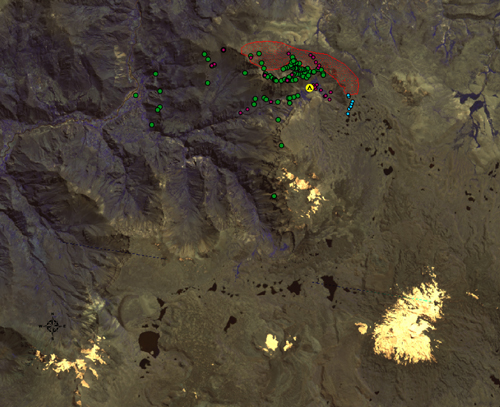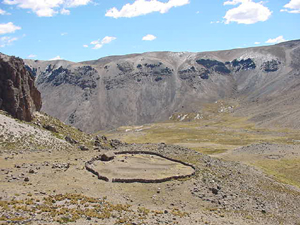Skip navigational links Geoarchaeological Investigations of the Waynuna Site
and the Alca Obsidian Source, Cotahuasi Valley, Peru
Principal Investigators: Dan Sandweiss, UMaine, Michael Malpass, Ithaca College.
CCI Graduate Student: Kurt Rademaker UMaine Undergraduate field and lab assistants:Louis Fortin, Ben Morris, David Reid
Scientific Collaborators: Martin Yates, Dan Lux, Kirk Maasch (University of Maine), Dolores Piperno (Smithsonian Tropical Research Institute), Adan Umire, Pablo de la Vera Cruz (National Institute of Culture – Peru)
How and by what route(s) did people first migrate into South America? How did they adapt to the late Pleistocene environments of this area? Current models include a coastal migration, a highland migration, or simultaneous coast and highland migration routes. To resolve the question of the coastal-highland cultural relationship and define early migration routes into South America, we must find, excavate, and analyze comparable archaeological data from contemporary early sites on the coast and in the interior highlands.
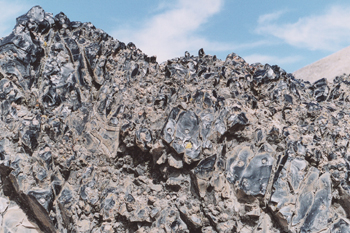
The only direct link yet demonstrated between early coastal and highland settlements comes from Quebrada Jaguay, a 13,000-9,000 year-old coastal site in southern Peru excavated by a UMaine team in the 1990s (Sandweiss et al. 1998). Quebrada Jaguay is the best-dated early coastal site in South America, and the initial occupation there is the oldest known fishing settlement in the New World. Obsidian (volcanic glass) artifacts found in the first occupation levels were sourced (Burger et al. 2000) to a geological deposit near the town of Alca in the remote highland Cotahuasi valley some 165 km distant. This direct connection between early coastal and highland occupations offers a unique clue about where to look in the highlands for Terminal Pleistocene-age sites.
The Alca Project focuses on geoarchaeological investigations of the Alca highland obsidian source and Waynuna, a highland preceramic site previously identified (Jennings 2002) close to a geological deposit of Alca obsidian. Alca was one of the two most economically important obsidian resources in Peru throughout prehistory. Alca obsidian has been found at archaeological sites throughout the southern Andes dating from all time periods – it was used by numerous civilizations, from early peoples to the Inca.
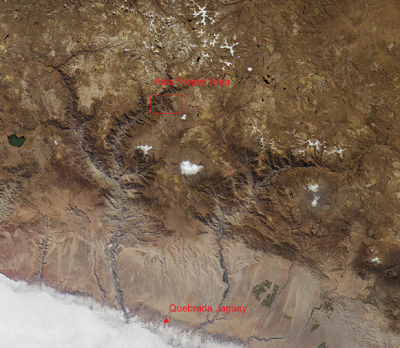
In 2004, our team traveled to the highland Cotahuasi valley (journal pages), where we investigated the site of Waynuna to assess potential links with Quebrada Jaguay. Preliminary excavations at Waynuna discovered an intact 4,000 year-old house with associated features, datable organic remains, artifacts of Alca obsidian, and some of the earliest evidence of corn agriculture found thus far in the Peruvian Andes. Following the Waynuna excavation, we successfully identified an extensive obsidian deposit at 5,000 m (16,500 ft) elevation - this deposit is the largest known obsidian source in Peru. Near the core deposit of Alca obsidian, we identified over 20 associated quarry, workshop, and habitation sites. The association of some of these sites with glacial landforms suggests that the sites may be quite ancient, possibly contemporary with Quebrada Jaguay - these sites may be the direct connection between early coastal and highland settlements that we have been seeking.
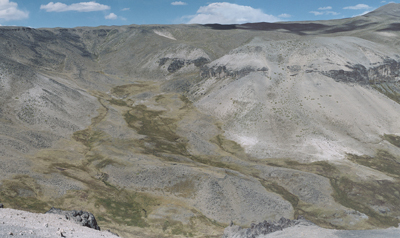
Currently we are conducting archaeological analyses of materials recovered from the Waynuna site and geochemical analysis of samples from the Alca source. Future geoarchaeological and paleoenvironmental studies in this area will address the distribution of ancient settlements, the changing dimensions of mountaintop glaciers, and the distribution of freshwater, lithic resources, and biotic communities in highland and coastal settings. This ongoing research contributes to understanding the early prehistory of southern Peru and ways in which climate change affected the initial human settlement of the New World.
